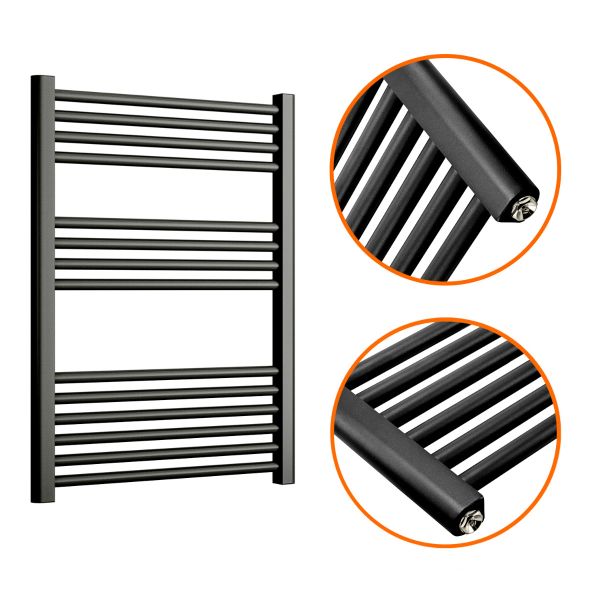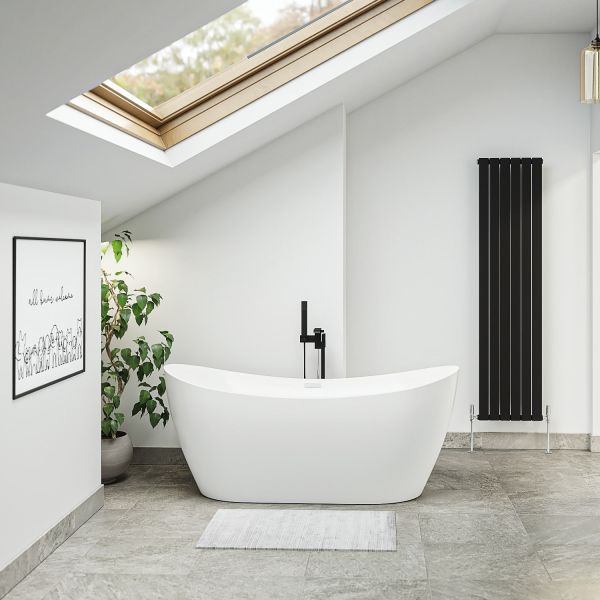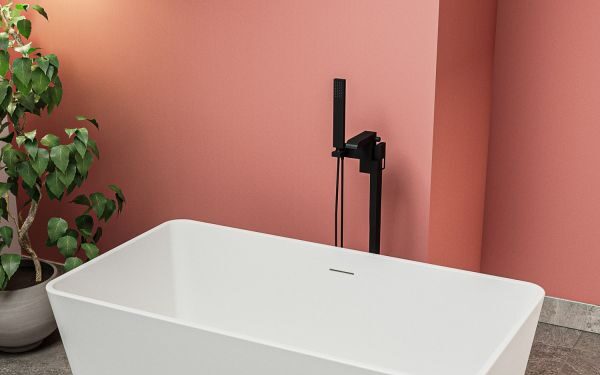In Irish homes, the bathroom is more than a functional space—it’s where we prepare for the day ahead and unwind in the evening. Yet, it’s often one of the coldest rooms in the house, especially during our damp, chilly winters. A cold bathroom isn’t just uncomfortable; it can lead to condensation, damp issues, and mould growth.
One of the most effective and affordable ways to combat this is by adding a towel rail radiator. It’s a win-win solution—it heats the room efficiently while keeping your towels warm and dry. These dual-purpose radiators have become a popular choice across Ireland, offering both practicality and a touch of luxury.
Here’s everything you need to know about enhancing your bathroom with a bathroom radiator, from planning to installation, along with costs in euros.
Why Choose a Towel Rail Radiator?

1. Dual Functionality
Bathroom radiators serve two purposes: they heat the room and keep your towels toasty and dry. This helps reduce dampness and stops towels from smelling musty—a common problem in poorly ventilated bathrooms.
2. Space-Saving Design
Towel rail radiators are typically wall-mounted, freeing up valuable floor space in smaller bathrooms. Their vertical design means you can add heating without sacrificing functionality or aesthetics.
3. Style Options
These radiators come in a variety of styles, from basic white ladder designs starting at around €65, to more luxurious chrome, matte black, or designer options costing €300 and upwards. Whatever your bathroom style—traditional or modern—there’s a towel rail to suit.
4. Improved Energy Efficiency
Newer towel rail radiators, when fitted with thermostatic radiator valves (TRVs), allow you to control the heat precisely, ensuring you only use as much energy as needed.
Types of Towel Rail Radiators
1. Plumbed (Hydronic) Towel Rails
These are connected to your central heating system. They only operate when the heating is on, which is fine during winter but less ideal in the warmer months.
2. Electric Towel Rails
These work independently of your heating system and plug into the mains or a fused spur. Perfect if you want year-round towel warming.
3. Dual Fuel Towel Rails
Best of both worlds. They connect to the central heating but also have an electric element for use when the heating is off. Slightly more expensive but offer maximum flexibility.
Planning Your Bathroom Upgrade

Assess the Space
- Measure your wall area carefully. Towel rail radiators come in various sizes, from compact models as narrow as 400mm wide and 800mm high, up to larger units exceeding 1800mm in height.
- Check proximity to plumbing or electrical points. For plumbed models, the location of existing pipes is key. For electric models, consider where your nearest fused spur is located (standard practice in bathrooms in Ireland is to use an IP-rated switched spur outside the bathroom).
Calculate the Required Heat Output (BTUs or Watts)
To effectively heat the room, you need to calculate the appropriate radiator output.
- Small bathrooms (3m² – 5m²): 400W – 600W (approx. 1,400 – 2,000 BTU)
- Medium bathrooms (6m² – 9m²): 600W – 900W (approx. 2,000 – 3,000 BTU)
- Larger bathrooms (10m²+): 1,000W+ (approx. 3,400 BTU+)
Ensure the radiator you choose is sufficient to heat the space, not just dry towels.
Style Considerations
- For traditional bathrooms, chrome or white ladder-style rails work well.
- For modern bathrooms, consider matte black or anthracite grey finishes.
- Designer towel rails with horizontal bars, geometric designs, or curves are also available, albeit at higher prices (€300 – €700).
Installation Process
For Hydronic Towel Rails:
- Turn off the central heating and drain the system if necessary.
- Remove existing fittings if replacing an old radiator or heater.
- Mark the new radiator’s positions on the wall, ensuring level alignment.
- Fit brackets securely using appropriate fixings for the wall type (solid or stud).
- Connect to the central heating pipes, using angled or straight valves depending on pipe configuration.
- Install TRVs for temperature control and energy savings.
- Refill and bleed the system, checking for leaks and ensuring correct pressure.
For Electric Towel Rails:
- Install must be carried out by a qualified electrician, in line with Irish electrical regulations.
- Mount the radiator securely, ensuring the heating element is installed as per manufacturer guidelines.
- Connect to a fused spur outside the bathroom, ensuring appropriate IP ratings.
- Test for safety and functionality.
For Dual Fuel:
- Requires both plumbing and electric connection.
- Install the radiator first.
- Fit the electric element as per instructions.
- Wire to the fused spur and plumb into the central heating as above.
Costs Overview (In Euros)
| Item | Price Range |
|---|---|
| Basic white towel rail radiator | €65 – €120 |
| Mid-range chrome or black models | €150 – €300 |
| Designer towel rail radiator | €300 – €700 |
| Electric heating element (for dual fuel) | €50 – €100 |
| TRVs and valves | €40 – €80 |
| Plumbing installation (labour only) | €200 – €400 |
| Electrical installation (labour only) | €150 – €300 |
Estimated Total Cost:
For a standard installation, expect to pay around €350 – €850, depending on the type of radiator, size, and whether plumbing or electrical work (or both) is needed.
Benefits of This Upgrade
- Increased Comfort: Stepping into a warm bathroom with heated towels is a simple luxury that improves your daily routine.
- Reduced Damp and Mould: By keeping the room warmer and towels drier, you help prevent condensation build-up—a key concern in Irish homes.
- Added Value: A well-fitted, stylish towel rail radiator can enhance the overall look and feel of your bathroom, adding to your home’s appeal. With free delivery on bathroom radiators Ireland, it’s quick and easy to buy these.
Common Mistakes to Avoid
- Choosing the wrong size radiator: Many people choose a towel rail based purely on looks, not on output. Always calculate BTU or wattage needs.
- Poor positioning: Installing the radiator in a cold corner may reduce its effectiveness. Ideally, place it near the shower or bath, but not directly under windows.
- Skipping TRVs: Without thermostatic valves, you lose control over temperature, leading to wasted energy.
- DIY electrical work: Always hire a qualified electrician for electric or dual fuel towel rails. DIY mistakes can be dangerous and illegal in Ireland.
Conclusion
Adding a towel rail radiator to your bathroom is one of the smartest, most cost-effective upgrades you can make in your home. It not only boosts comfort but also tackles practical issues like dampness and cold spots, which are especially problematic in Ireland’s climate.
With entry-level models starting at around €65 and installation costs manageable, it’s an upgrade accessible to most homeowners. By choosing the right style, size, and heating type for your space, you can transform your bathroom into a warm, inviting, and stylish retreat all year round.

